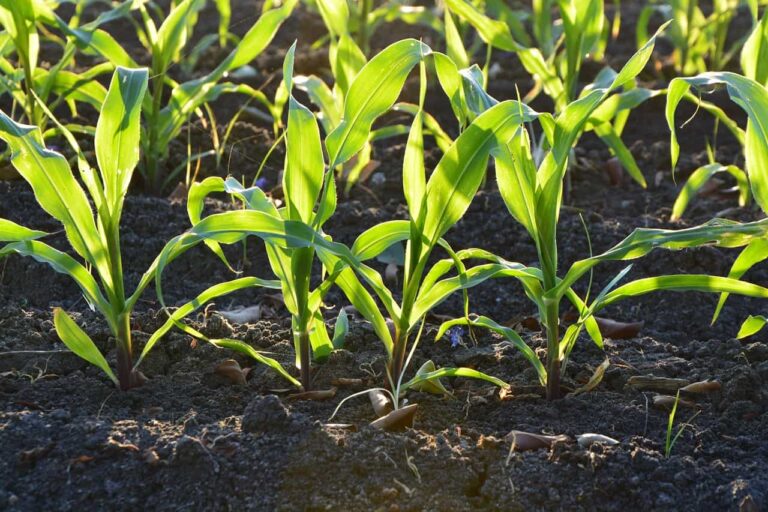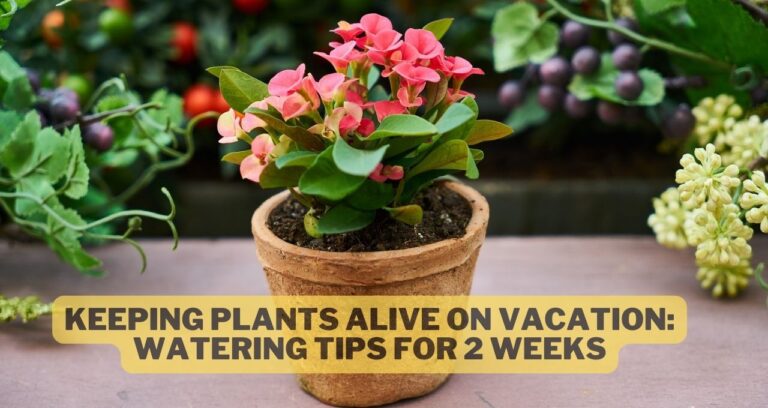Grass Seed Watering Timeline: Survival Tips
A beautiful lawn is a dream come true for homeowners. Lush green grass is a perfect setting for summer evenings and the kids running barefooted. What could be better?
But maintaining it takes time, effort, and patience. Effective irrigation is crucial for promoting the growth and upkeep of vibrant and robust grass.
A common question many people have is how long can grass seed go without water.
We will give you all the information about how long grass seeds can live without water. We’ll explore factors that affect grass seed survival without water.
Also, recommend watering frequencies to ensure your lawn thrives.
How long can grass seed go without water?
Grass seed, like all living organisms, requires water to survive and germinate. Without enough water, the chances of survival decrease.
Generally, It can survive for about 2-3 days without water. But survival without water depends on many factors.
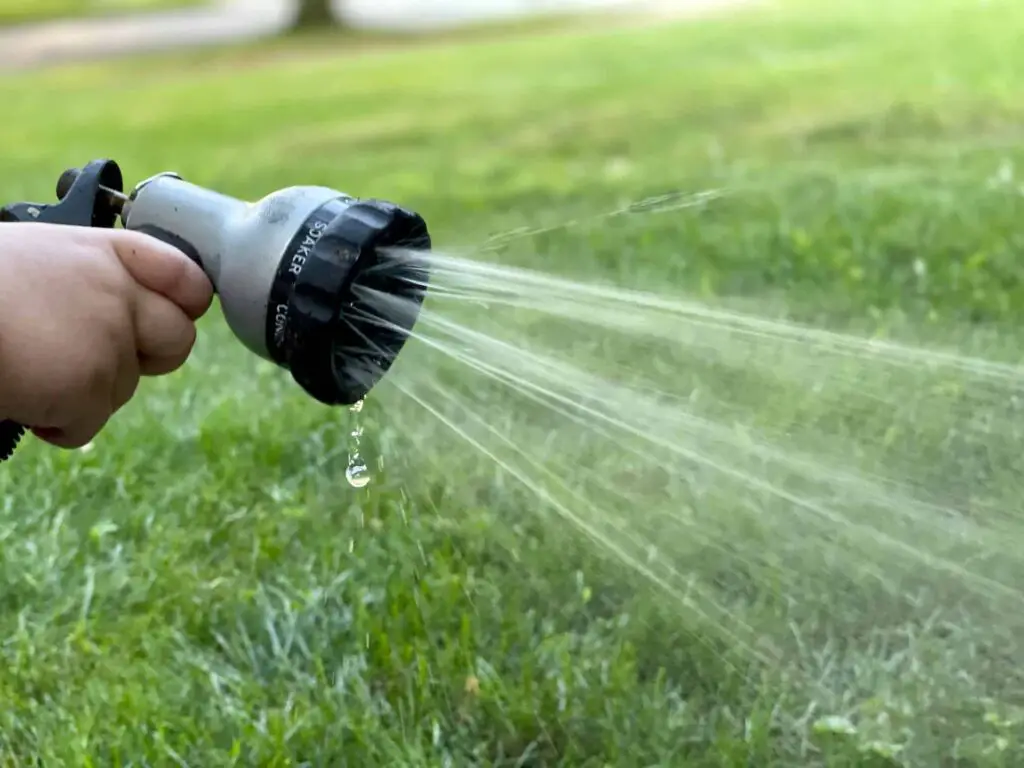
- The type of grass seed plays a crucial role. Various types exhibit different levels of tolerance to drought. Certain varieties can withstand drought, while others need more frequent watering.
- Environmental conditions also affect the water need of grass seed. Higher temperatures and strong winds increase evaporation rates. Under these circumstances. Soil loses its moisture faster, which may need more frequent watering of grass seeds to avoid dehydration.
- The growth stage is important to consider. Grass seeds that haven’t sprouted yet are more sensitive to lack of water than those that have already grown. Keeping the soil wet during the germination process ensures the plant grows well.
- Moist soil is impotent during germination. Regularly watering the lawn is necessary to maintain the ideal moisture level. Lack of water during this stage reduces the chances of germination. That can lead to patchy or sparse growth.
- Once the grass seed germinates and establishes a root system, it becomes more tolerant to drought. But, consistent moisture is still required for sprouted grass seedlings to grow and anchor into the soil. Without water, the root system can become weak and susceptible to damage.
- As the grass seedlings mature and develop into a full-fledged lawn. They become more resilient to drought conditions. But, it requires regular irrigation to stay green and healthy. Most sod requires 1 to 1.5 inches of weekly rainfall or irrigation.
Most of the time, gardeners should water grass seed every day or every other day for the first few weeks after you put it. Giving seeds time to grow roots is important for their growth. Once the grass is well-established, it requires less water. But it must be watered regularly to stay healthy and look good.
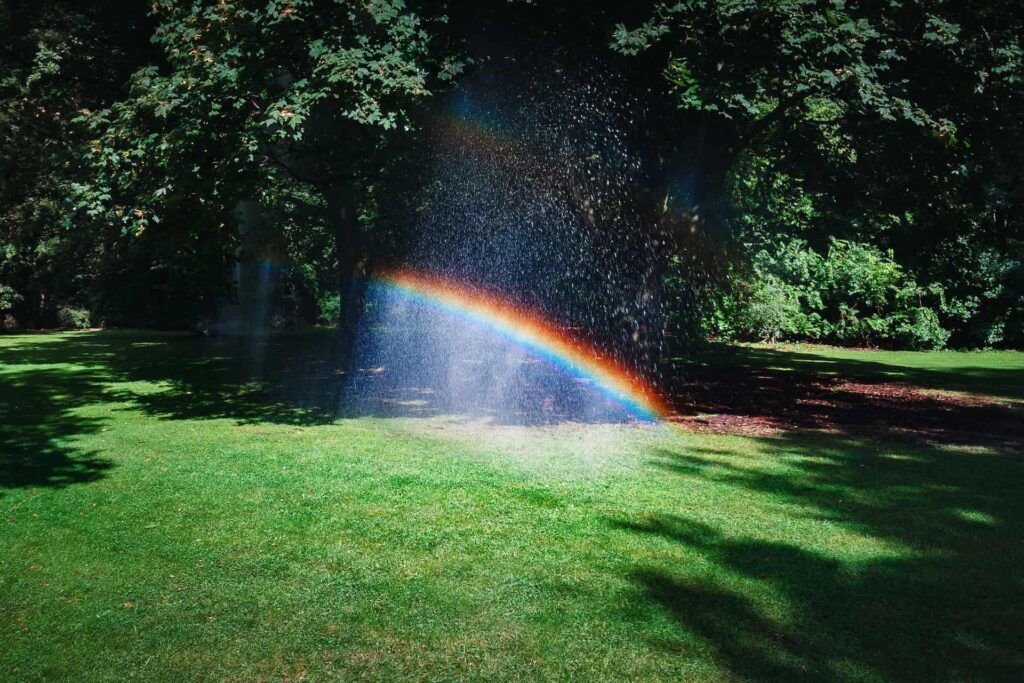
Read More :- Planting Grass Seed After Weed Killer: Timing Tips
What is the Ideal Watering Schedule for Grass Seed?
Grass type, climate, and soil conditions determine the watering schedule. To maintain soil moisture, irrigate softly and frequently.
This promotes germination and robust roots. After seeding, irrigate twice daily to keep the soil surface moist but not saturated for two weeks. Watering early morning and late afternoon reduces evaporation.
It Helps New grass seeds dry before nightfall, minimizing disease risk.
After two weeks, water less often but more deeply to encourage deep root growth. Established grass seed needs 1 inch of water twice a week.
However, soil moisture must be monitored and irrigation schedules adjusted. Soil moisture retention is influenced by rainfall, temperature, and soil type. When watering, use a moisture meter or manually examine the soil.
Overwatering, like underwatering, can cause shallow root development and disease susceptibility. Keep the soil wet but not saturated.
A healthy lawn from grass seed requires correct watering, soil preparation, sunlight, and care. Local horticulturists and lawn care professionals can also offer grass-specific advice.
The role of fertilizer and mulch in grass seed growth
Applying fertilizer and mulch plays an important role in the healthy growth of new grass. It’s best to fertilize before planting by spreading it over the topsoil and mixing it with a rake or hoe.
Mulching after seeding can help keep moisture levels high. Not only that, it’s preventing weed growth. Sprinklers or irrigation systems are ideal for watering. Since it provides consistent water. That helps germinate your seeds more evenly across your lawn’s surface area.
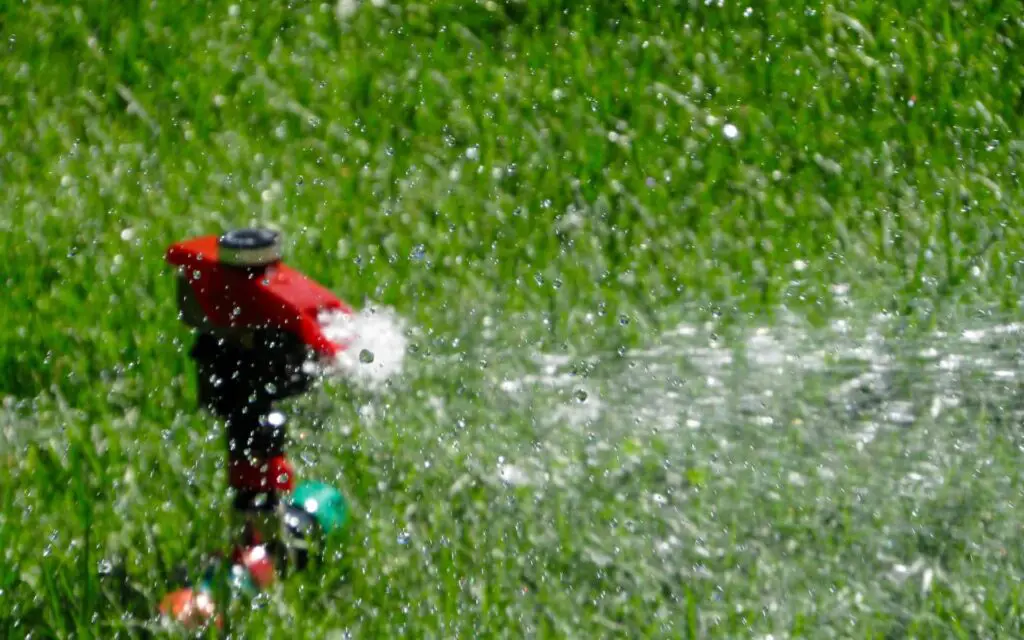
What is the duration required for a grass seed to start germinating?
The germination time differs based on factors. Factors like grass type, environmental conditions, and care can all play a role. On average, seed germination can take 5 to 30 days.
But, some fast-growing varieties may start to sprout within a week. while others may take a bit longer. Below we discussed some factors that can affect the germination time of grass seed:
1. Type of grass:
Different types of grass have different germination periods. Some varieties, like ryegrass or fescue, may germinate more quickly than others. Such as Bermuda or Kentucky bluegrass.
Cool-season grasses are less drought-tolerant than warm-season grasses. While all need water to germinate and establish. But warm-season grasses can withstand longer periods without water.
2. Watering
Different type of grass has specific water requirements. Ensuring that the moisture levels remain consistent is important for the best results.
Sprinklers or a hose with a soft spray nozzle is a useful method for daily watering, and it’s always a good idea to water in the late afternoon or after a previous night’s rain. Weather conditions to determine the frequency of watering sessions.
Moreover, fertilizer, mulch, or topsoil can aid in retaining soil moisture and help robust growth.
Grass seed needs to be moist to sprout, so it can only survive a day without new moisture. Missing a day of watering grass seeds doesn’t necessarily result in seed death. But provide them with regular water for successful germination and growth.
3. Environmental conditions:
Your area’s temperature and moisture levels impact grass seed germination time. Warmer temperatures and consistent moisture can speed up germination. while cooler temperatures or dry conditions may delay it.
4. Soil preparation:
Preparing the soil before planting can help create optimal conditions for grass seed germination. This includes ensuring the soil is loose, weeds-free, and has good drainage. Organic waste, like compost, can help seeds stay moist and get nutrients.
5. Care provided:
Proper care after seeding can also affect grass seed germination time. This includes regularly mowing lawns, fertilizing as needed, and controlling weeds. These practices help create optimal conditions for the grass seed to grow and thrive.
Read More: – 9 Cheap Way To Cover Dirt In Backyard: Best Solutions
How Quickly Does Grass Seed Dry Out?
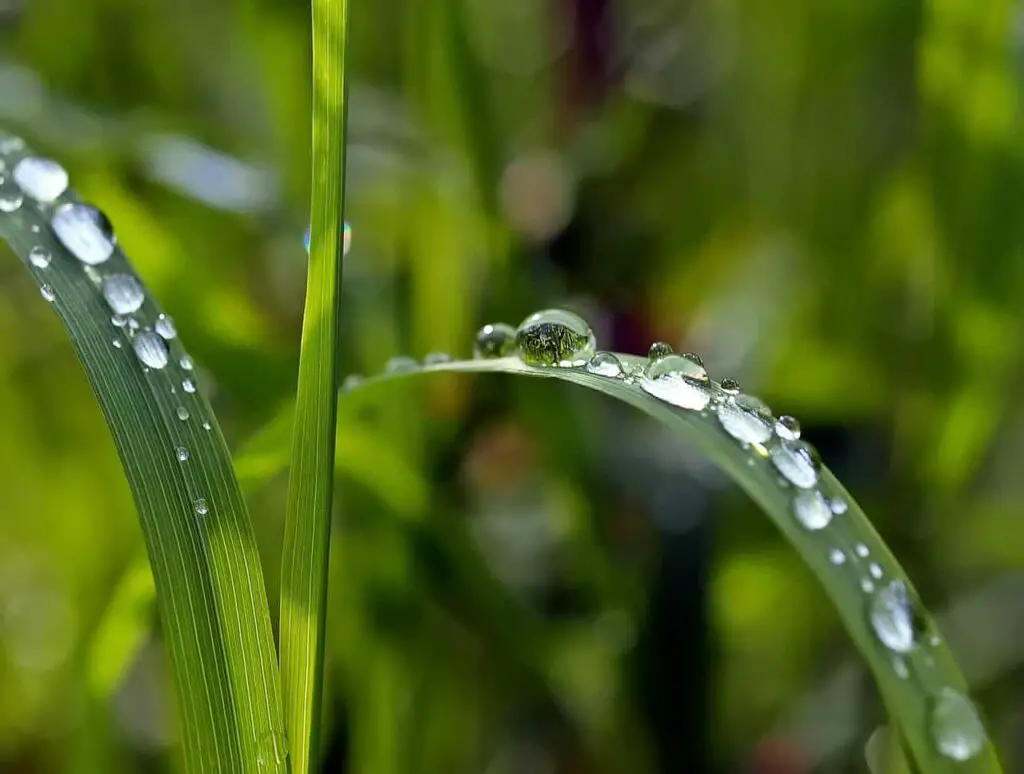
If you’re planting grass seeds in a hot and dry climate, it’s important to know that they can dry out quickly. This can hinder their germination and growth.
It’s best to avoid planting on windy days or during the hottest part of the day. Additionally, storing the seed in a cool and dry place is recommended to ensure optimal viability.
Will Grass Seed Grow if it Dries Out?
Grass seeds can survive drying out for a limited time. However its ability varies depending on the seed type, temperature, and humidity. While it may last up to 12-24 hours in a dormant state. It’s best to keep it moist during germination for optimal growth.
Can Grass Seed Survive Drought?
Grass seeds can survive drought conditions to some extent. At the same time, it is resilient and can withstand periods of dryness. Moisture is necessary for germination and root establishment.
During a drought, it may take longer to germinate, and the lack of water can hinder their growth. However, certain grass species and varieties have developed adaptations. That helps them tolerate drought conditions.
How long does grass seed last without water?
Grass seeds can survive without water for 2-3 days, but this may be shorter in hot and dry climates. Sowing the seed when it rains or providing regular watering after planting is recommended.
How long can dry seeds be stored before planting?
The time dry seeds can be stored before planting varies based on factors like seed type, quality, and storage conditions. Most grass seeds can last up to two years in a cool, dry space. Planting fresh or one-year-old seeds is best for optimal germination rates.
Also Read :- Keeping Plants Alive On Vacation: Watering Tips For 2 Weeks
Are there any alternative methods for promoting grass growth that do not need water?
Yes, alternative methods for promoting grass growth do not need water. Some of these methods include:
1. Soil aeration: Aerating the soil by creating small holes allows for better air circulation. It promotes root growth and health.
2. Organic fertilizers: Using organic fertilizers can provide essential nutrients to the soil. Promoting growth without relying on water.
3. Proper mowing techniques: Mowing the at the correct height. It can help stimulate growth and prevent weed competition.
4. Mulching: Adding organic mulch retains soil moisture and provides nutrients as it decomposes.
5. Selecting drought-tolerant grass varieties: Choosing varieties adapted to dry conditions.
It is important to note that. While these methods can help promote grass growth without water. They may not be as effective as traditional watering methods. Additionally, some water may still be necessary in dry conditions to maintain healthy grass growth.
What are some common mistakes people make when growing grass from seed?
Some common mistakes people make when growing grass from seed include:
1. Improper soil preparation: Failing to prepare the soil properly is a common mistake.
2. Over or under-watering: Overwatering leads to fungal diseases and shallow root growth. While under-watering causes poor germination and stunted growth.
3. Incorrect seeding rate: Using too much or too little seed can affect the overall quality of the lawn.
4. Poor seed-to-soil contact: Seeds need good contact with the soil to germinate and establish properly.
5. Not protecting the seed: Birds, pests, or heavy rainfall can disrupt germination.
6. Ignoring soil pH and fertility: Grass thrives in specific pH ranges, and soil fertility is crucial for healthy growth.
7. Neglecting proper mowing and maintenance: Mowing at the right height is important for good growth. Not caring for your yard by fertilizing, aerating, and removing weeds can also stop grass from growing.
Also Read :- How To Prune Pampas Grass : The Perfect Solution
Conclusion
In gardening, creating a new lawn is an exciting project. But, if you forget to water the grass seeds or sod, it could lead to disappointment. So, how long can grass seed go without water?
Well, it depends on some factors. The local climate plays a role, along with the type of soil you have and the growth stage of the grass. During germination, when the seeds are turning into young plants. They need moisture to develop and establish strong roots in the soil. For laid sod, daily watering is vital to help the roots firmly anchor into the ground and blend with the existing lawn.
If you live in a hot and dry area, grass seeds can only grow with enough water. Water is like hydrogen for the grass; it helps them produce energy for growth through photosynthesis.
To ensure your lawn’s success, regularly water the newly planted grass seeds and moisten the soil. Adjust your watering schedule based on the weather conditions in your area. To improve an existing lawn, consider over-seeding during the next growing season to fill in bare patches and make it healthier.
Remember, the key is to give your grass the right amount of water, sunlight, and nutrients to have a beautiful and vibrant lawn.


